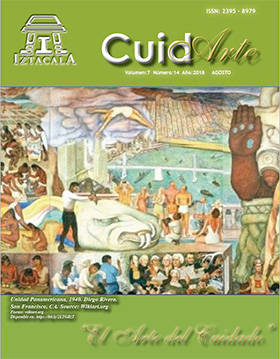Ethical dilemma in the evacuation of a hospital during an earthquake
Main Article Content
Abstract
Downloads
Article Details
Citas en Dimensions Service
References
(1) FONDEN. El Fondo de Desastres Naturales de México-Una Reseña. Ciudad de México. [Internet] [consultado 26 febrero 2018]. Disponible en https://bit.ly/2xa8Nt
(2) Organización Mundial de la Salud. WPRO Hospital Safe from Disasters. Campaña Mundial de Reducción de Desastres 2008-2009. [Internet] [consultado el 24 febrero 2018] Disponible en https://bit.ly/2HIGcNf
(3) Secretaría de Salud. Antecedentes, Hospital Seguro en México. [Internet]. México: Secretaría de Salud, 26 de febrero de 2016 [Consultado 1 marzo 2018]. Disponible en: https://bit.ly/2vkJ1S8
(4) Secretaría de Salud. Programa Hospital Seguro. Dirección General de Calidad y Educación en Salud (DGCES). [Internet]. México: Secretaría de Salud, 4 de marzo de 2016 [Citado 1 de marzo 2018]. Disponible en https://bit.ly/2D0YWEY
(5) Echevarría-Zuno S, Cruz-Vega F, Elizondo-Argueta S, Martínez-Valdés E, Franco-Bey R, Méndez-Sánchez LM. Atención en emergencias y desastres en las unidades de terapia intensiva del Instituto Mexicano del Seguro Social: triage y evacuación. CirCir [Internet] 2013 [Citado 2 marzo 2018]; 81: 246-255 Disponible en https://bit.ly/2H7Rttk
(6) Villareal E, Visbal G. Dilemas éticos, Revista Científica Salud Uninorte. [Internet] Barranquilla, 2013; 29 (1): 116. Disponible en https://bit.ly/2vtfPZg
(7) Organización Panamericana de Salud. Crónica de Desastres: El terremoto de México de 1985. [Internet] Washington DC: OPS; 1986 Disponible en https://bit.ly/2Hr6uG3
(8) Instituto Mexicano del Seguro Social. Plan Institucional frente a emergencias y desastres. Marco de actuación general. México; 2011 [Internet] [consultado 26 febrero 2018]. Disponible en https://bit.ly/1W0wqY7
(9) Instituto Mexicano del Seguro Social. Plan Delegaciones y UMAE ́s de Apoyo: Plan Sismo IMSS. México, 2011: 9-52 [Internet] [consultado el 26 de febrero 2018]. Disponible en https://bit.ly/2kIylog
(10) Organización Mundial de la Salud. Hay que actuar urgentemente para proteger los hospitales de los peligros naturales. Día Internacional para la Prevención de los Desastres. Comunicado de prensa. Ginebra, 14 octubre 2009. Disponible en https://bit.ly/2HbV1eg
(11) Secretaría de Gobernación. Guía práctica del programa Hospital Seguro. México, 2016 [consultado el 27 de febrero 2018] Disponible en https://bit.ly/2JT9ZmV
(12) Beauchamp TL, Childress JF. Principios de Ética Biomédica. 4ª edición. Barcelona, España: Masson; 1999. PP. 311-377.
(13) León C FJ. Después de un terremoto: Bioética en situaciones de catástrofe. Rev. méd. Chile [Internet]. 2012 [consultado 18 marzo 2018]; 140(1):108-112. Disponible en: http://dx.doi.org/10.4067/S0034-98872012000100016.
(14) Instituto Mexicano del Seguro Social. Taller-simulacro Evacuación de Unidades Hospitalarias con énfasis en áreas críticas. México [Internet] [consultado el 2 de marzo 2018] Disponible en https://bit.ly/2JQfnqR
(15) Instituto Mexicano del Seguro Social. Programa unidad médica segura. Evacuación de Unidades Médicas. México, 2009. [Internet] [consultado el 2 de marzo 2018] Disponible en https://bit.ly/2spKcfb

